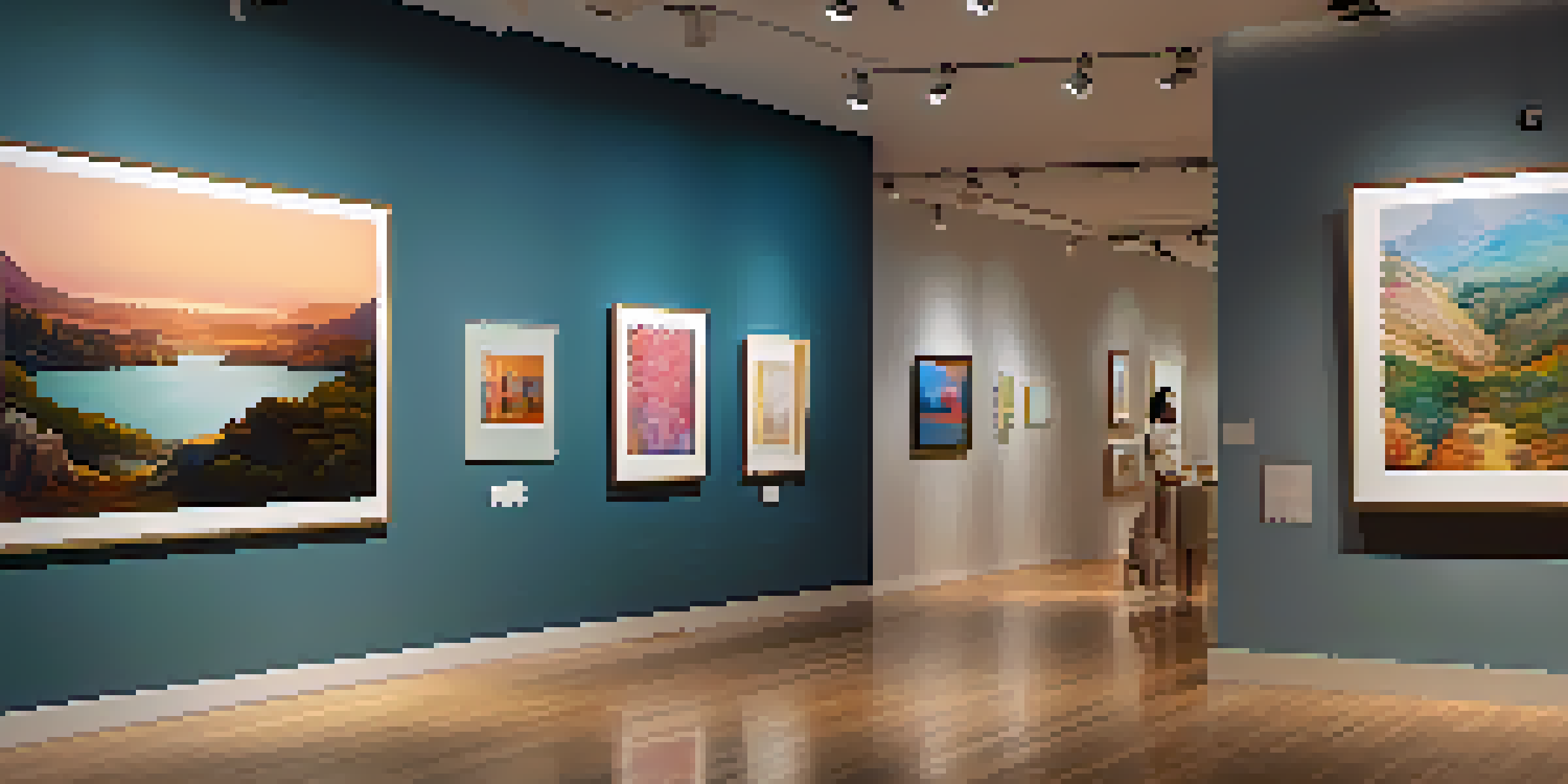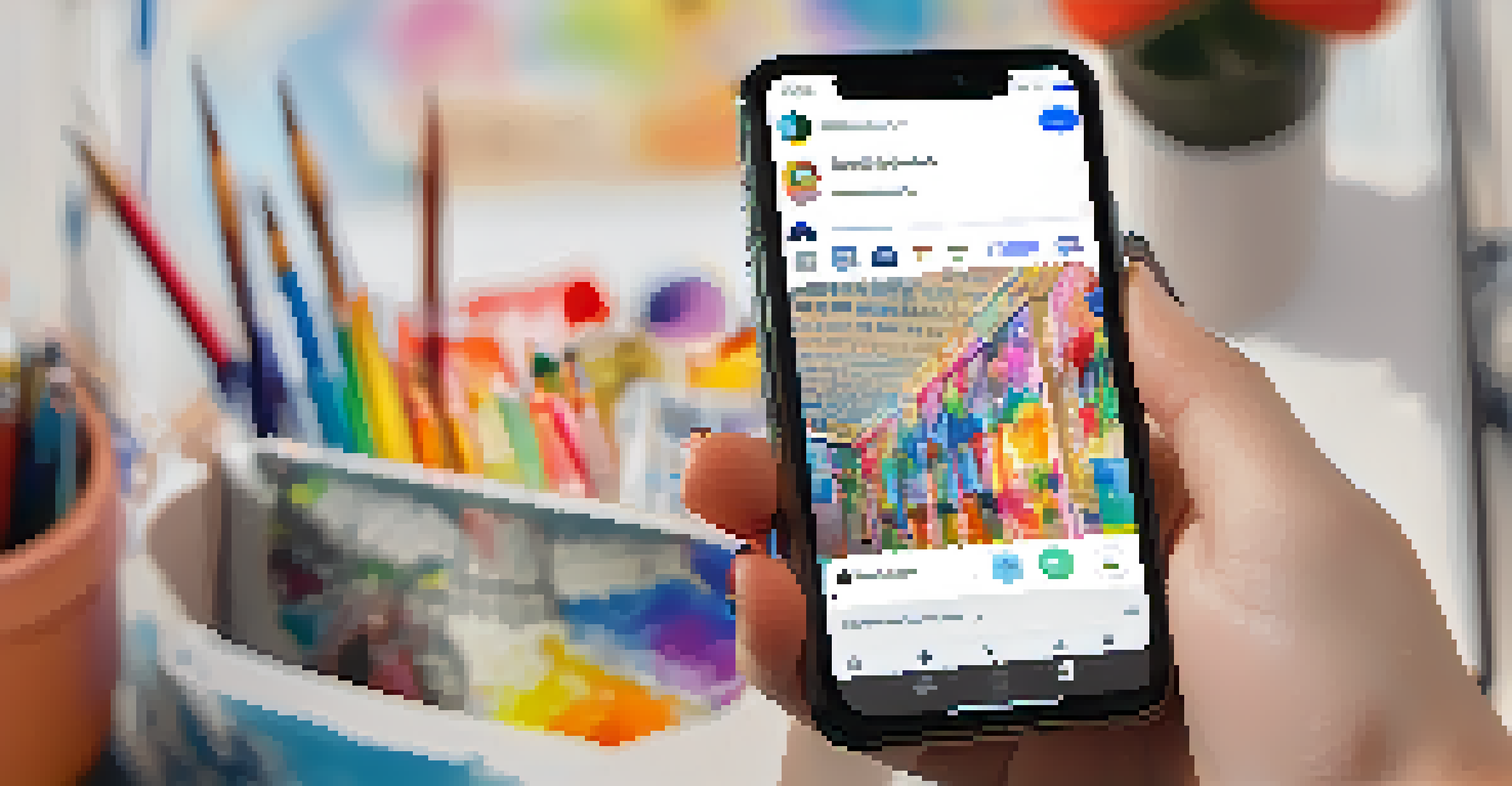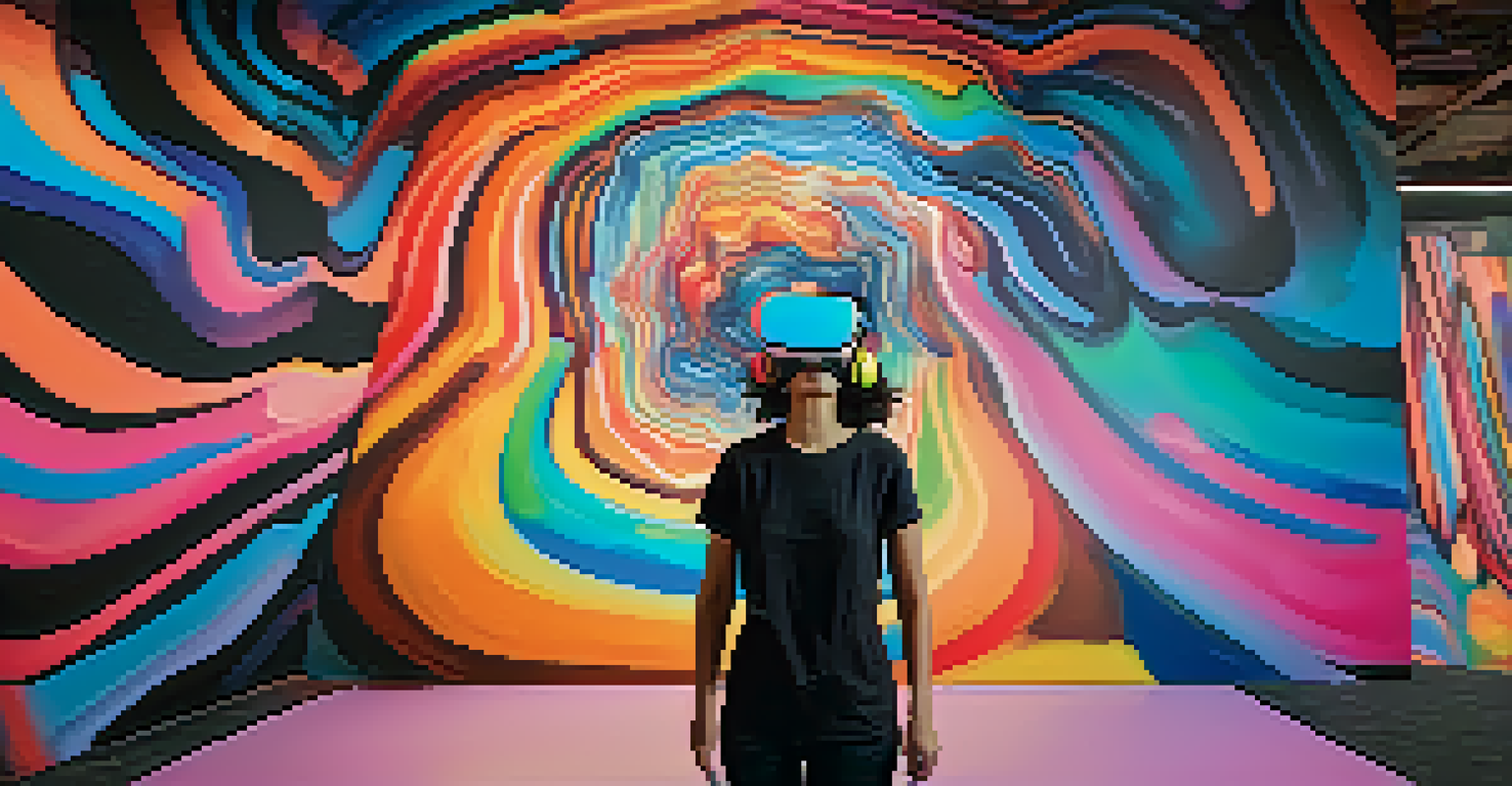The Evolution of Art Criticism in the Digital Age

The Shift from Traditional to Digital Platforms
Art criticism has undergone a significant transformation with the rise of digital platforms. Traditionally, critics relied on print media—newspapers, magazines, and journals—to share their insights and evaluations. Now, art enthusiasts can express their opinions through blogs, social media, and online publications, making art criticism more accessible than ever.
In the digital age, everyone has a voice, and that voice can shape the conversation around art in powerful ways.
This shift has democratized the art world, allowing diverse voices to emerge. Artists and critics no longer need to wait for the approval of established institutions to share their views. Instead, platforms like Instagram and Twitter have paved the way for a broader range of perspectives, enriching the conversation around art.
However, this accessibility comes with challenges. The sheer volume of content can lead to information overload, making it difficult for audiences to discern quality criticism from mere opinion. As a result, the digital landscape has changed the criteria by which we evaluate and engage with art.
The Role of Social Media in Art Criticism
Social media has played a pivotal role in reshaping art criticism. Platforms like Instagram allow artists to showcase their work and receive immediate feedback from followers. This instant interaction creates a dynamic dialogue that traditional criticism often lacked.

Moreover, social media has fostered a sense of community among artists and critics alike. Hashtags and groups enable individuals to connect over shared interests, leading to collaborative discussions and critiques that can enhance understanding and appreciation of art.
Digital Platforms Democratize Critique
The rise of digital platforms has allowed diverse voices in art criticism to emerge, making insights more accessible.
However, the brevity of social media posts can sometimes dilute the depth of criticism. Critics may struggle to convey nuanced opinions in a single tweet or a short caption, raising questions about the effectiveness of such platforms for thorough analysis.
Emergence of Citizen Critics
The digital age has given rise to 'citizen critics'—individuals who share their art critiques online without formal training. This shift has blurred the lines between professional and amateur criticism, allowing anyone with a passion for art to contribute to the discourse.
Art is not what you see, but what you make others see.
These citizen critics often bring fresh perspectives and unique insights that challenge traditional norms. They can highlight overlooked artists or movements, fostering a more inclusive art community that values diverse opinions.
However, the lack of formal training can also lead to misinformation or overly subjective critiques. As audiences navigate this new landscape, discernment becomes crucial in separating valuable insights from less informed opinions.
Impact of Online Reviews and Ratings
Online reviews and ratings have transformed how art is critiqued and consumed. Websites and apps that allow users to rate exhibitions or artworks can significantly influence public perception and attendance. This immediate feedback loop can be beneficial for artists but also poses challenges.
For instance, artists may feel pressured to create works that resonate with popular opinion rather than explore more personal or experimental avenues. This trend may dilute artistic integrity in favor of mass appeal, potentially stifling innovation.
Citizen Critics Challenge Traditions
The emergence of 'citizen critics' has blurred the lines between professional and amateur criticism, offering fresh perspectives on art.
On the flip side, positive online reviews can propel lesser-known artists into the spotlight, helping them gain recognition they might not have received through traditional channels. Consequently, the digital age has created a complex relationship between art, critique, and audience perception.
The Rise of Video and Multimedia Critiques
Video and multimedia critiques have become increasingly popular in the digital landscape. Platforms like YouTube and TikTok allow critics to share their insights through engaging and visually appealing formats. This evolution caters to audiences who prefer dynamic content over traditional written critiques.
These video critiques can break down complex art concepts into digestible segments, making art more approachable for viewers. Additionally, the use of visuals and sound can enrich the critique, offering a multi-sensory experience that written words alone may not convey.
However, this medium also presents challenges. Critics may prioritize entertainment value over substance, leading to a focus on style rather than depth. The balance between engaging presentation and meaningful critique is essential to maintain credibility.
Navigating the Ethics of Digital Criticism
With the rise of digital art criticism, ethical considerations have come to the forefront. Issues like plagiarism, misrepresentation, and the potential for online harassment can complicate the critique landscape. Critics must navigate these challenges while maintaining integrity in their evaluations.
Additionally, the anonymity of the internet can lead to harsher criticism that may lack constructive feedback. Critics must strive to balance honesty with respect, ensuring their critiques contribute positively to the artistic community.
Video Critiques Transform Engagement
Video and multimedia critiques provide engaging formats that make art concepts more digestible for audiences, but they can risk prioritizing style over substance.
As artists and critics continue to engage in this digital dialogue, fostering a culture of accountability and ethical critique becomes increasingly important. This commitment can help build a more supportive environment for artistic expression.
The Future of Art Criticism in a Digital World
Looking ahead, the future of art criticism will likely be shaped by ongoing technological advancements. As virtual reality (VR) and augmented reality (AR) become more mainstream, they may offer new ways for critics to engage with and evaluate art. Imagine walking through a virtual gallery while receiving real-time critiques from various sources!
Moreover, as artificial intelligence (AI) continues to evolve, it may assist critics in analyzing trends, audience preferences, and even generating critiques. While this could streamline the critique process, it also raises questions about the authenticity and human touch that traditional criticism provides.

Ultimately, the evolution of art criticism in the digital age reflects broader societal shifts. Embracing these changes while remaining committed to thoughtful and meaningful engagement will help ensure that art criticism continues to thrive in this new landscape.